We sample a beautifully-preserved 1973 AEC Mandator
Posted by Chris Graham on 26th January 2024
Andrew Leonard owns several preserved lorries, but this 1973 AEC Mandator is probably one of his favourites, as Peter Simpson discovers.
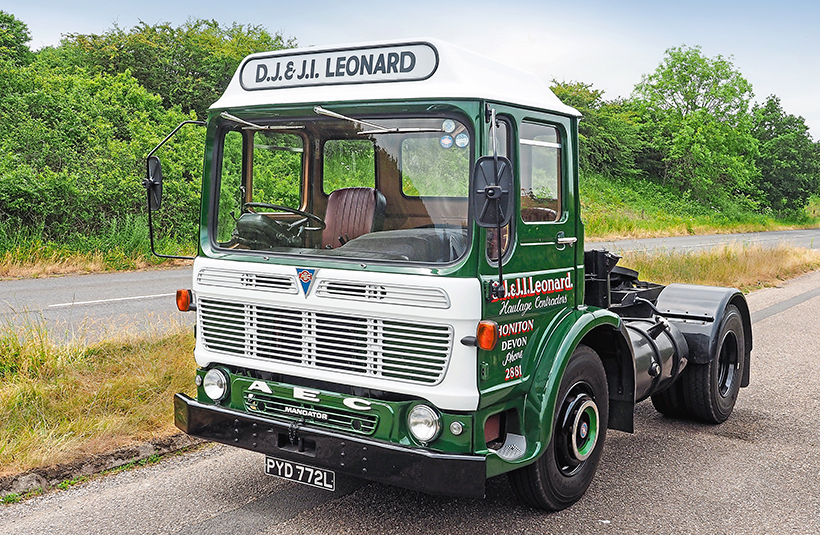
Andrew Leonard’s superb, 1973 AEC Mandator.
Back in September 2023, we featured Honiton-based Andrew Leonard’s newly-restored ex-South Western Electricity Board Leyland Cruiser. He also, however. owns several other commercial vehicles including an AEC Mercury which we featured in 2016, and a Leyland Constructor that’s covered over a million miles and was the final lorry that his father David operated as an owner-driver. More recently, he has also developed an interest in, and a collection of, LDV 200 Pilots, the story of which will be coming up later in the year.
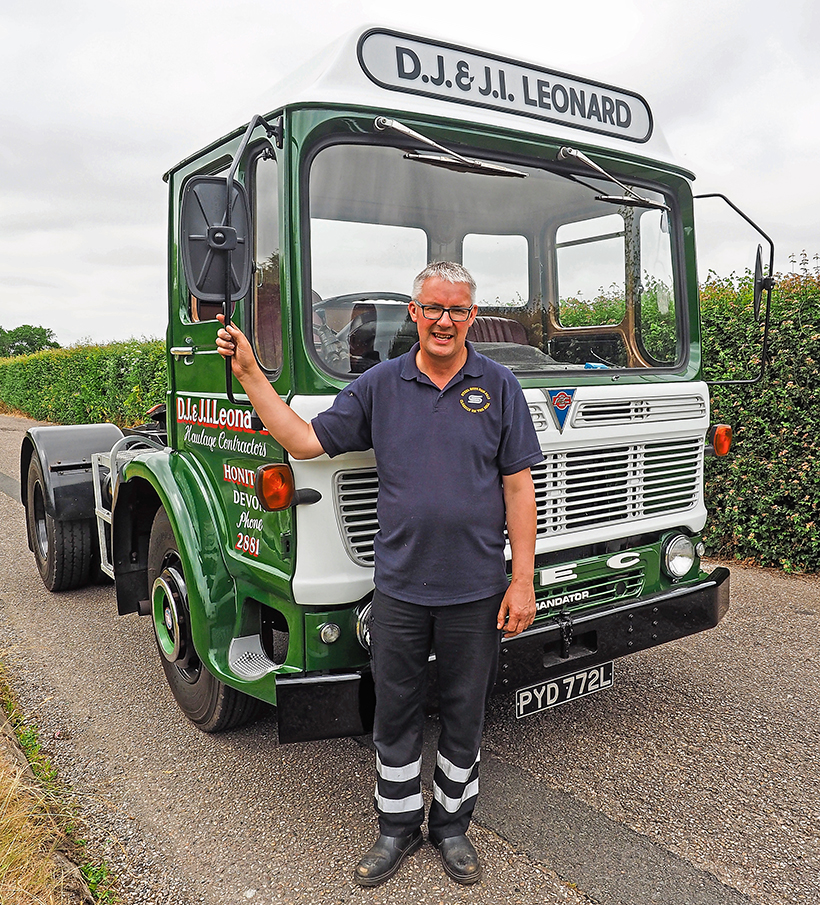
Andrew Leonard owns several lorries, but reckons this one is his favourite.
But out of all of his collection, and with the obvious exception of his Dad’s Constructor, 57-year-old Andrew reckons that the 1973 AEC Mandator featured here is his favourite. In his words “If I had to sell my collection, this is the one that I would want to keep.” The AEC was new to the Somerset River Authority – later incorporated into the National Rivers Authority and used mainly with a low loader to move dredging equipment around for keeping the Somerset Levels drainage channels clear. Sometimes, however, such as in the famous hot summer of ’76, it worked with a tanker taking fresh drinking water to where it was needed.
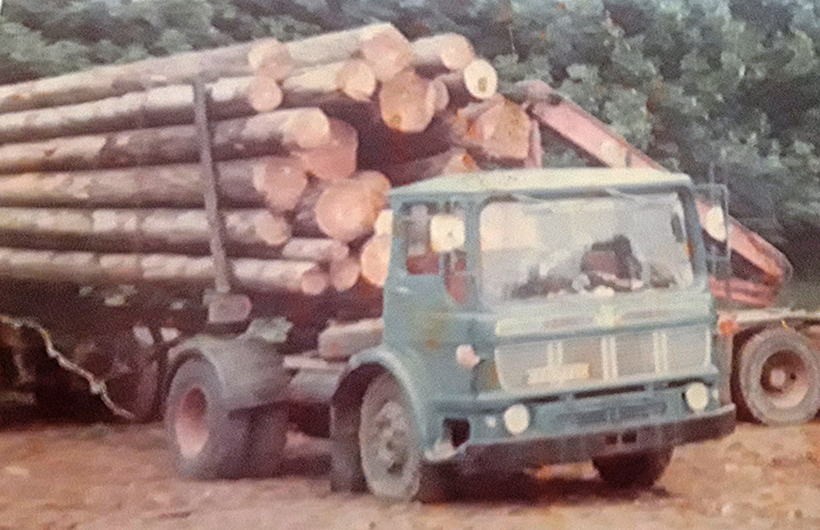
While working as a logging lorry in the 1980s. A tough life…
Somewhat unusually for a lorry owned by a public authority, the AEC was delivered with lots of factory extras “it seems like someone ticked every box” as Andrew puts it. This included power steering, a Fuller ten-speed range-change gearbox and AV760 engine. To move the authority’s biggest dredging plant, the Mandator was dual-plated to 32 and 40 tons; the normal weight limit was 32 tons, but the authority had special dispensation to operate at 40 tons when needed. To help facilitate this, the original specification included an extremely low-ratio back axle, but this was changed prior to Andrew’s ownership.
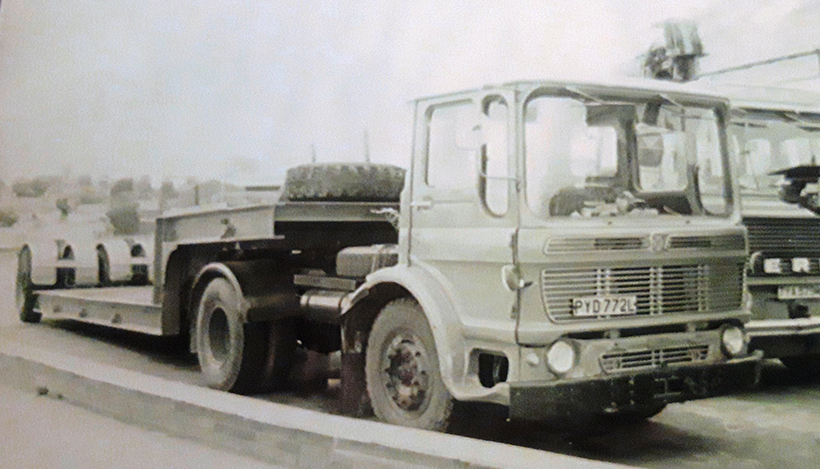
Another shot taken during its hard-worked stage of life, this time with a four-in-line low-loader.
Anyway, the rivers authority kept the Mandator until 1980, at which point it was bought by a lorry dealer/dismantler in Taunton. Having had a relatively easy life though, the AEC was still in very good condition and was resold to local timber haulier Harry Edwards. Here it suddenly went from an extremely easy life to an extremely hard one, pulling newly-felled round timber – trees in other words – work which entailed extensive off-road operation.

Andrew returned the AEC to the road within a few months of purchase, though it wasn’t especially pretty during this period.
After this, the lorry was parked up in a Mr Andrew’s yard and the next we hear of PYD 772L is in late 1999 when Andrew, along with friend and fellow enthusiast Karl Rundle went to buy an AEC cab door from father and son Ray and Clive Phillips. They mentioned that there was an AEC Mandator “in a yard in Taunton” so, unsurprisingly, Andrew went to take a look. And probably even less surprisingly, he ended up buying it.
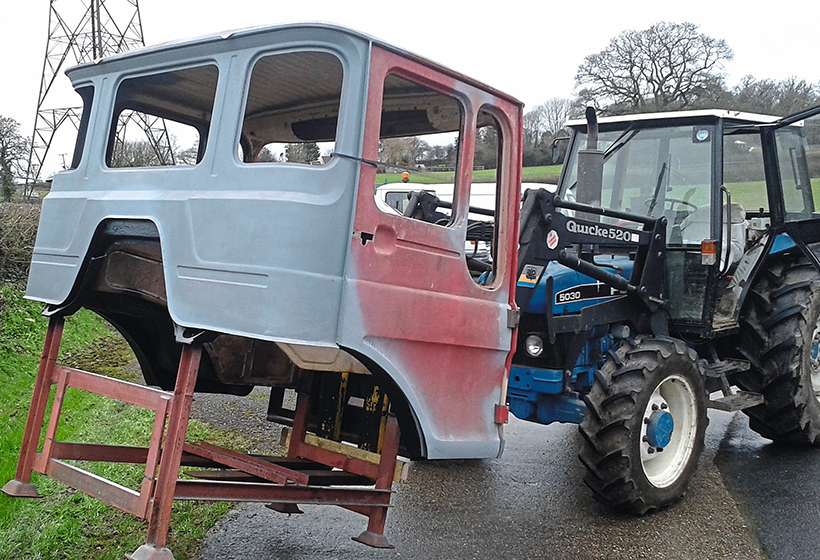
The replacement cab under restoration, which included fitting a new replacement rear panel and rear roof section.
This was just before Christmas 1999. By all accounts the AEC was still in very good mechanical condition at this point, as by March 2000 it was MoT’d and back on the road, although “it didn’t really look anything special.” Andrew uses the local depot of Gregory Distribution for testing and this is generally a straightforward business though “one of the DSA testers is only in his twenties and I do sometimes have to explain things to him.” We should perhaps at this point mention that having spent 20 years with Pickfords (starting as a management trainee, finishing as branch manager) and then driven lorries since, Andrew is more than capable of doing this, and people do generally realise that he has the experience to know what he’s talking about.
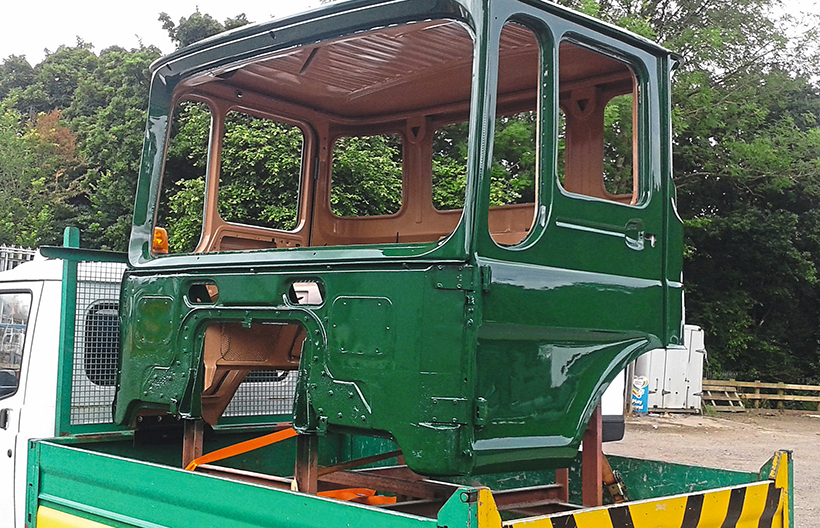
Replacement cab resplendent in mid-Brunswick green outside. Pink primer inside the cab was an AEC characteristic.
Not been restored
Unlike most of Andrew’s other lorries, the Mandator has never had a last nut-and-bolt restoration. In fact, it hasn’t really been restored at all. Rather it’s been kept serviced and maintained, with a few wear-and-tear consumables renewed along the way as and when required. However, a few years ago the cab was changed for a better one taken from an AEC turntable ladder fire appliance. This was in very good overall condition but as usual with these had been modified at the back to carry extra personnel. Fortunately, a well-known Ergomatic enthusiast in the Midlands was able to supply a replacement back panel which went straight on, though the back of the cab roof had to be swapped for a section cut from a scrap cab. Other than that, the original doors were repaired for reuse. The original cab has been retained and is currently being restored for use on another lorry.
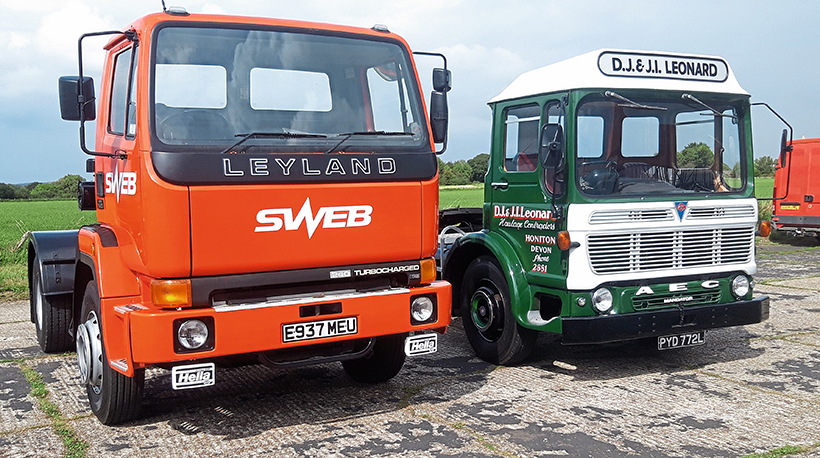
Classic Comparison – 1987 Leyland Cruiser and 1973 AEC Mandator. The Cruiser’s quieter, but Andrew reckons that despite being 14 years older, the AEC rides better.
When it came to colour, Andrew chose mid-Brunswick Green – he wanted to put his Dad’s name on it, but having already got a red AEC with that on, he wanted this one to be different. Additionally, in 1969 Andrew’s father’s first lorry as an owner driver was a new Ford D800. This, like so many Ford Ds at the time, came in factory-finish Buckingham Green, a very similar shade to mid-Brunswick. Both colours are also very similar to the Mandator’s green colour scheme when it was with the river authority.
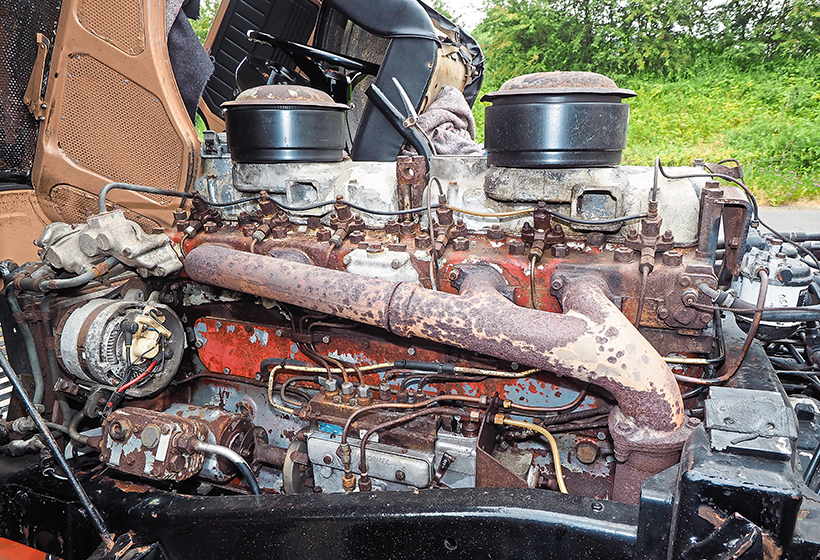
AEC 760 engine. The mechanical side of this lorry has not been restored.
On a more practical level, mid-Brunswick was used extensively by the Great Western Railway, and should therefore always be readily available for touching-in purposes! The sign-writing was done by John Corah, and as Andrew had some high-quality photos of the original lorry that his grandfather had taken, the original sign-writing could be matched exactly. There’s, though, one difference; by special request from Andrew’s mother Jill, her initials are on there as well as Dad’s.

Tipped cab, giving excellent engine access and revealing some pink-primer. This was normal.
When it came to the cab interior, Andrew used the best original-type parts that had come from the lorry, and from what he had in stock. As was usual with AEC, the interior metalwork remains in pink primer. Original trim is, apparently, now getting very difficult to find for all Ergo cabs, but AEC-specific stuff is particularly difficult.
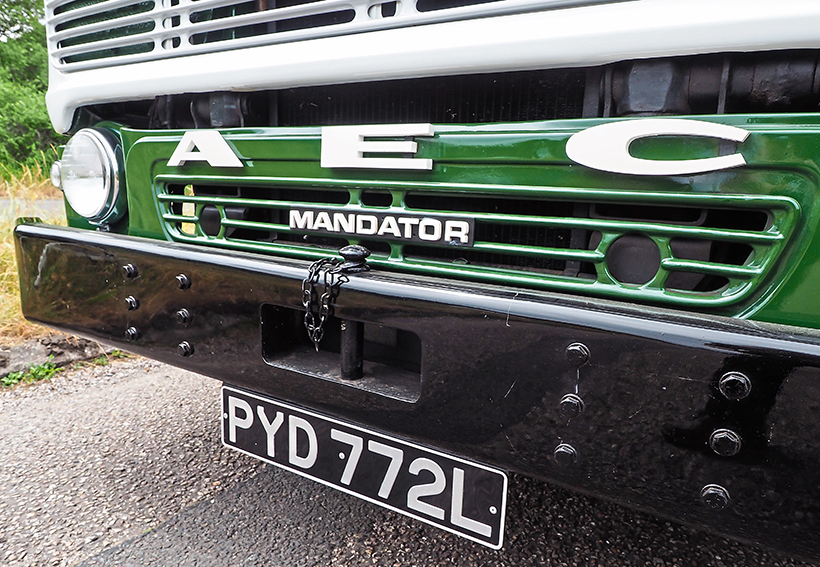
Somerset registration, the lorry was new to the Somerset River Authority.
Driver’s lorry
And that, basically, is the story up to date. This is clearly a lorry which Andrew enjoys driving a great deal; it is, in his words, “a good lorry that has never given me any trouble and always gets where I want it to and back again.” He also reckons that it’s a lot nicer to drive than the Cruiser, despite the latter being 14 years younger; “it rides better and is a lot less bouncy; it’s a nice drive.” Probably unsurprisingly though it is a bit noisy inside by modern standards, and this is where its age does show, with the Cruiser definitely the quieter and more relaxed on the motorway. Regular maintenance is straightforward enough, though with a six-gallon sump capacity, the regular oil changes that these engines do need don’t come cheap.

Cab is a replacement from a fire appliance, though the rear panel had to be swapped.
But there’s another aspect to all this; Andrew reckons that comparing this 1973 AEC Mandator with his 1987 Cruiser provides proof-positive of just how much more advanced AEC’s design, engineering and general thinking was than that of Leyland, and how much better things might have been if, instead of ditching pretty-much everything AEC at the time of takeover, Leyland management had been sufficiently open-minded to embrace at least some of AEC’s ideas and methods.
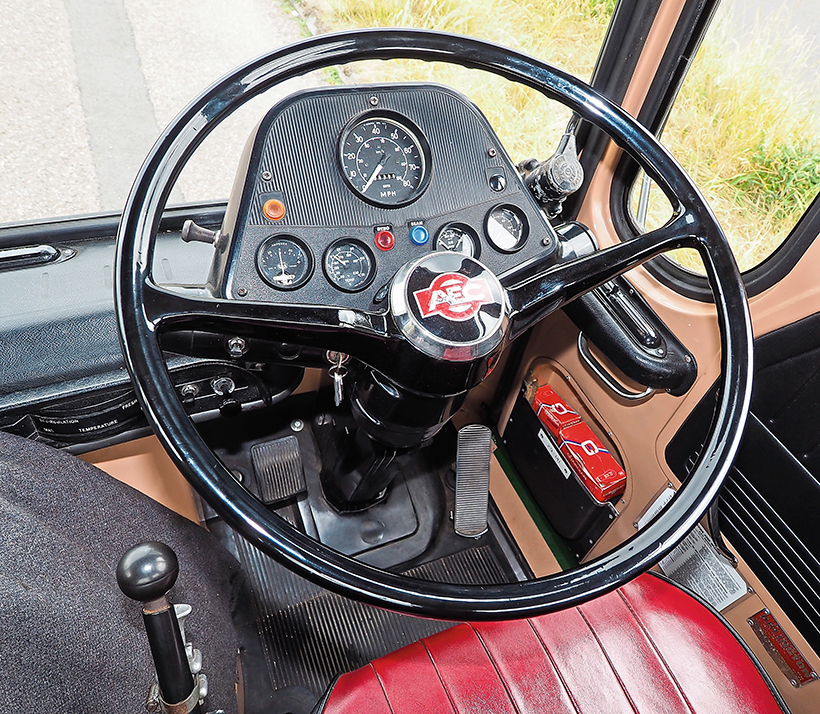
‘Ergomatic’ cab design extends to a thought-out instrument panel.
It wasn’t, of course, as some have suggested, a case of AEC all-good and Leyland all-bad; for starters Leyland’s sales and marketing side was far better, and the AEC 760 engine lived on as the Leyland TL12.
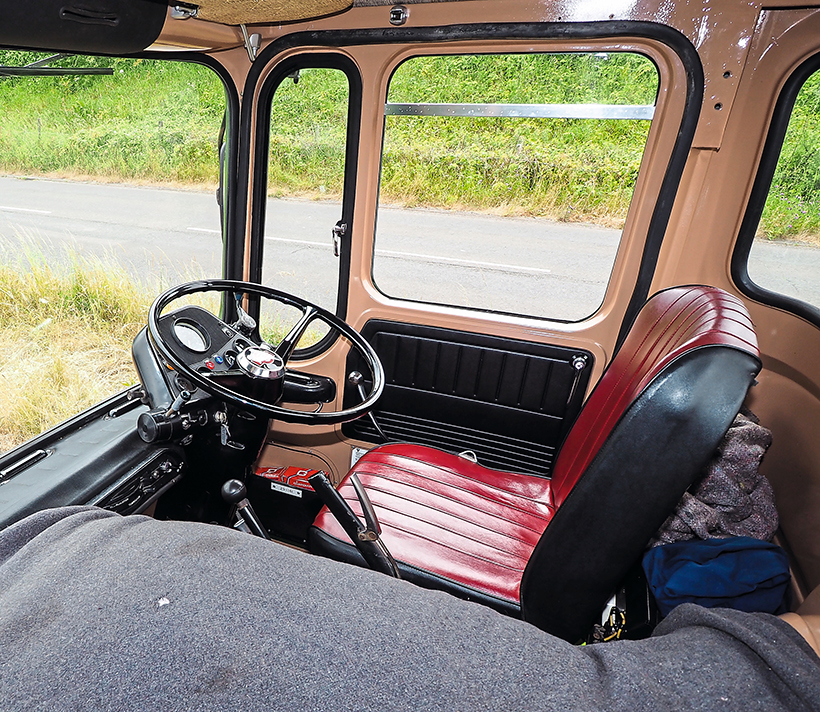
Tidy looking cab interior; trim is a mixture of original and replacements from Andrew’s ‘stores’.
But if AEC hadn’t simply died when the Southall plant closed in 1979, and it’s way of doing things had to some extent been incorporated into Leyland thinking? For starters, Leyland might just have been the beneficiaries of AEC’s still-very-strong customer and brand loyalty. As it was though most of this transferred to overseas manufacturers.
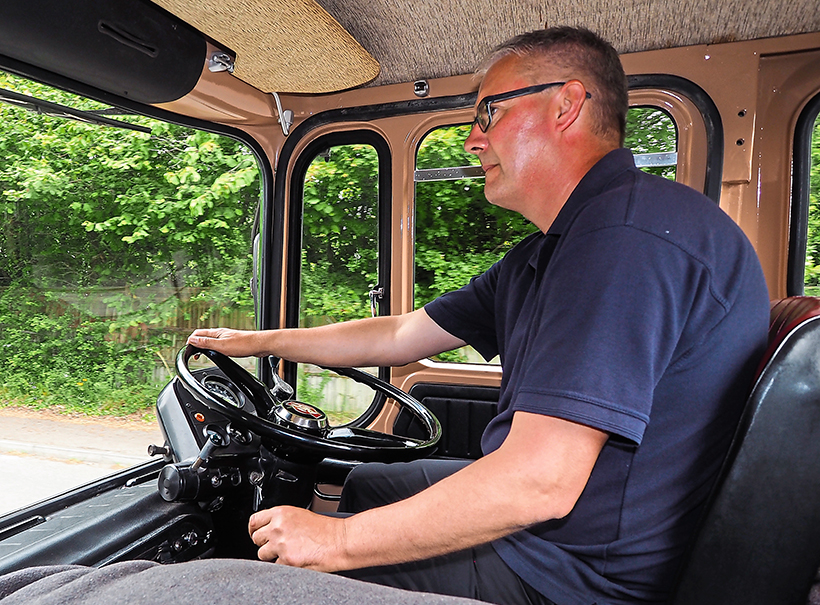
Andrew making good use of the Mandator’s Fuller gearbox and (optional) power steering.
Anyway, these matters have been debated for many years already, and I’m sure that will carry on for many more.
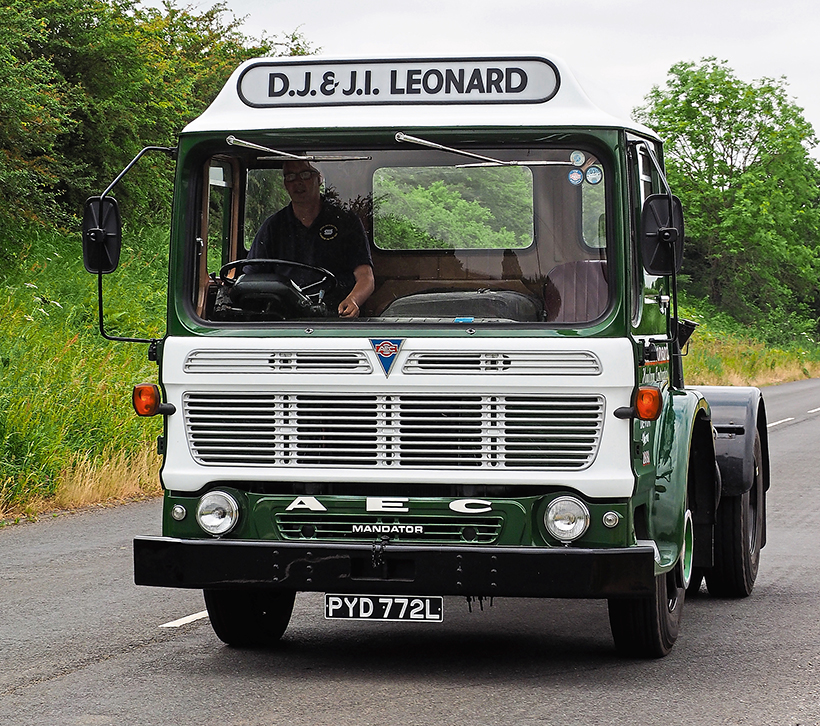
On the move, the AEC looks – and sounds – very impressive.
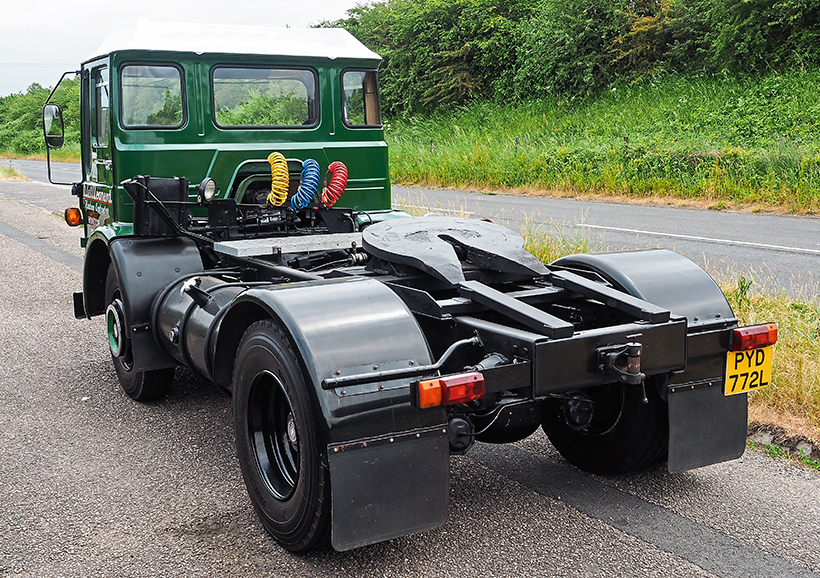
This feature comes from the latest issue of Classic & Vintage Commercials, and you can get a money-saving subscription to this magazine simply by clicking HERE
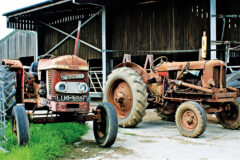
Previous Post
Tamar Vintage Tractors; a vintage and classic tractor sales specialist

Next Post
Tractor World 2024: bigger, better and earlier!



